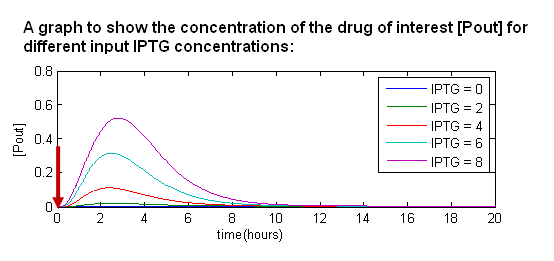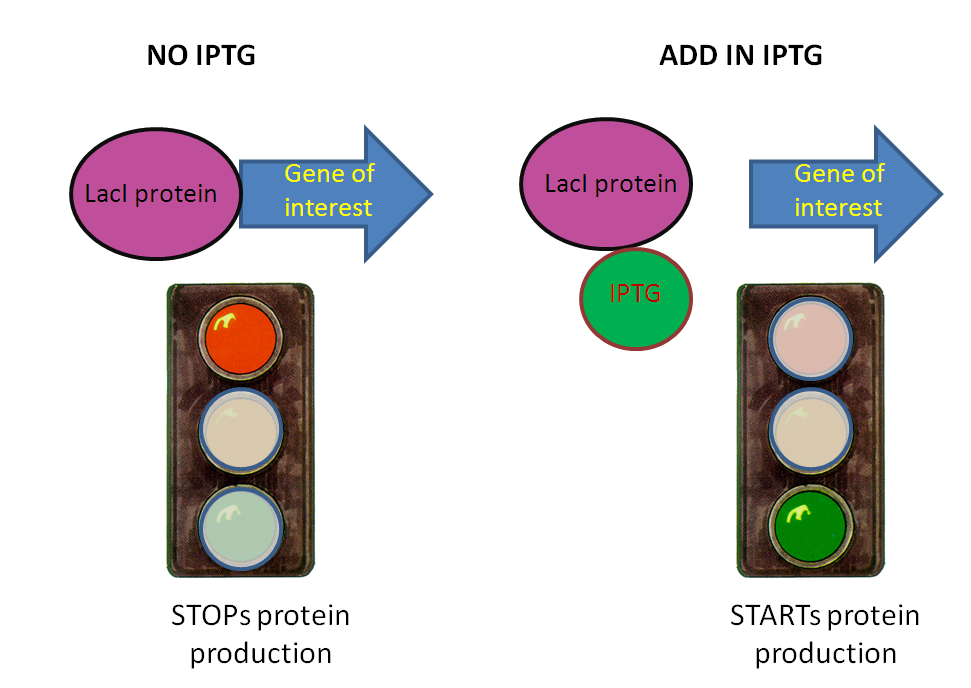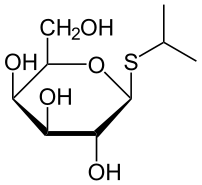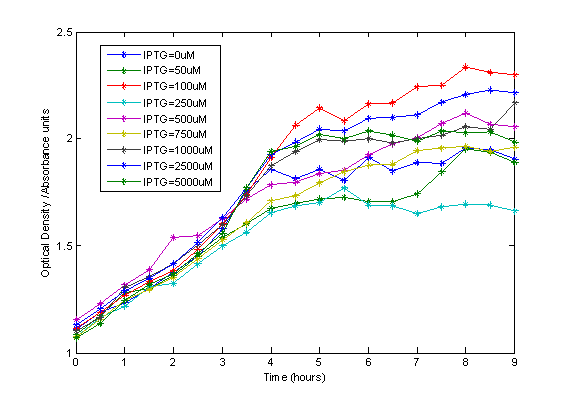Team:Imperial College London/Chemoinduction
From 2009.igem.org
(→Temporal Control: Chemoinduction) |
|||
| Line 86: | Line 86: | ||
<hr> | <hr> | ||
| + | |||
| + | ==Conclusion== | ||
| + | <b>Chemoinduction is the most widely used means of inducing a promoter. By using this well characterised IPTG inducible promoter as the starting point for our system, we give the user full control as to when to kick-start the system.</b> | ||
| + | |||
===Temporal Control: Chemoinduction=== | ===Temporal Control: Chemoinduction=== | ||
Revision as of 22:18, 19 October 2009

Chemoinduction feedback from todays session. Please delete as completed.
1) Add a few lines on the growth - why do we do this?
2) Make it clear that the LacI promoter is different from ours - stick it under a Learn More tab.
3) Genetic circuit needs to be standardised - see other modules.
4) The modeling does not correspond to the top - we won't have data to back this up. The 2 graphs are not the same. How do we sort this?
5) Write a description about the experiment and how we plan to get our results.
6) Matthieu calculated protein production in an excel file - PUT THIS IN! Table format with analysis. Nuri has this file...
7) Have a rationale section.
8) Add what teams can reuse from this module.
9) Have a conclusion of the page at the end - couple of lines.
Contents |
Module Integration - Chemoinduction
Chemoinduction
Overview
Our system is 'kick started' by the addition of a compound, IPTG, which activates Module 1 of our system. This is achieved by putting the genes for Module 1 under control of a chemically inducible genetic component called a promoter.
Rationale
In designing our system, we chose to use an inducible (switchable) promoter rather than a constitutive (always ON) promoter. This is to allow the cells to grow to a certain cell density before forcing them to produce protein. The production of protein can be a burden on the cell's resources, especially at the early stages of cell growth. Therefore, the culture should be allowed to grow to a certain density before the production of protein is induced.

About our reasons for choosing chemical induction
Theory
The Lac Operon
The Lac Operon is a good example of a genetic operon (several genes under control of one promoter) that has been widely studied in the field of Genetics.
The Lac Operon is a set of genes found in Escherichia Coli that control lactose metabolism in times when preferable sugars (ie glucose) are scarce. When glucose levels are high, the E.coli preferentially use this sugar. However, when glucose is not available, E.coli has a set of genes coding for the enzymes responsible for the metabolism of lactose.
We are making use of the same promoter as that found in the lac operon to control the activation of Module 1
Genetic Circuit
These genetic circuits are the designs upon which the functionality of The E.ncapsulator is based. We will go through the genetic design of the system, module by module. If you are unfamiliar with the symbols used, then check out our key to familiarise yourself with each circuit symbol and what it means.</b>
This diagram makes up part of the Module 1 genetic circuit
Under normal circumstances (without IPTG), the Lac inhibitor (LacI) is constitutively present in the system. This means that the promoter is repressed, and blocks the expression of the downstream genes.
When IPTG is added, it binds to LacI and cancels the repression on the promoter. This allows for the expression of the downstream genes, and therefore for the start of <b>Module 1.
Induction with IPTG
IPTG is an allolactose analogue. Allolactose is the lactose metabolite that triggers the transcription of the lactose operon in natural systems. Allolactose and IPTG activate transcription of the lac operon by binding to the LacI protein. When such binding occurs, the LacI protein changes confirmation, which renders it unable to bind to the operator region. This allows the RNA polymerase to continue reading beyond the operator and transcribe the downstream genes, thus removing the inhibition.
Results
Wetlab
Different concentrations of IPTG were added to a 96-well plate [link to assay] of e-coli Top 10 cells containing LacI-RFP genetic constructs. Here we measured the optical density of the cells over-time, for different concentrations of IPTG to monitor the effects in the culture. The IPTG growth curve results are plotted in the figure (ADD A FIGURE CAPTION TO IT: FIG1, FIG2 ETC).
By visual assessment,the growth rate of the culture prior the saturation phase stays within a narrow range and does not change significantly with concentrations of [IPTG]. Therefore, we can conclude that [IPTG] in the concentration ranges we are using does not affect cellular growth and is non toxic. The effects of IPTG have been widely studied [SAY THAT WE ARE CONFIRMING SOMETHING WELL KNOWN ANYWAY BY OTHERS]
Modelling
Taking into account the indications from the wetlab, we can then draw a relationship between different input IPTG concentrations and the amount of polypeptide produced.
- When we introduce IPTG into the system, it temporarily removes LacI from the system. Hence, during this period of time, we produce the drug of interest.
- When the effects of IPTG wear off, the system returns to equilibrium.
- The more IPTG we add in, the higher the amount of output protein.

DAVE:
FROM THE BOTTOM ONWARDS WE MAY NEED TO SHORTEN OR ADD SOME STUFF TO LEARN MORE TABS.IVE COMMENTED IT OUT, NOT DELETED IT. ALSO ADD LEARN MORE TABS FOR WETLAB AND DRY LAB LIKE IN M3 OVERVIEW!
Conclusion
Chemoinduction is the most widely used means of inducing a promoter. By using this well characterised IPTG inducible promoter as the starting point for our system, we give the user full control as to when to kick-start the system.
Temporal Control: Chemoinduction


 "
"








